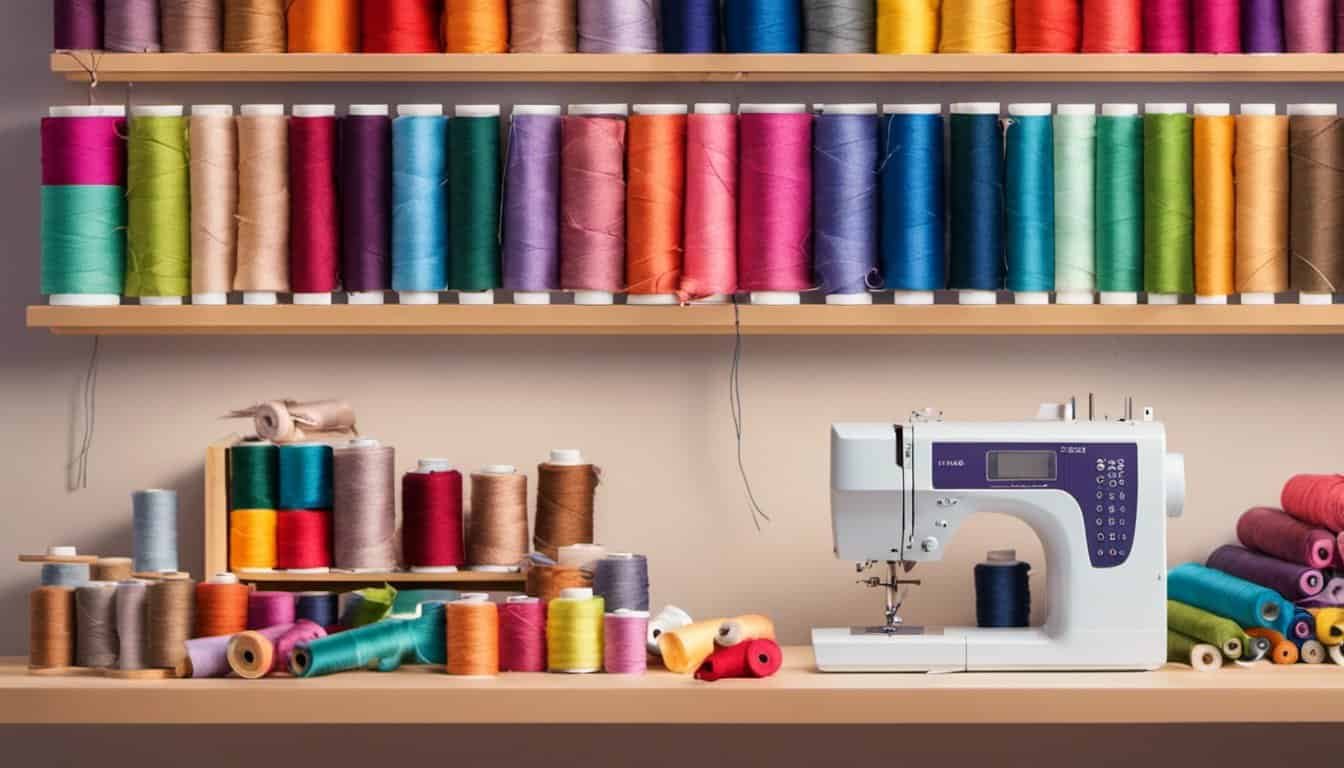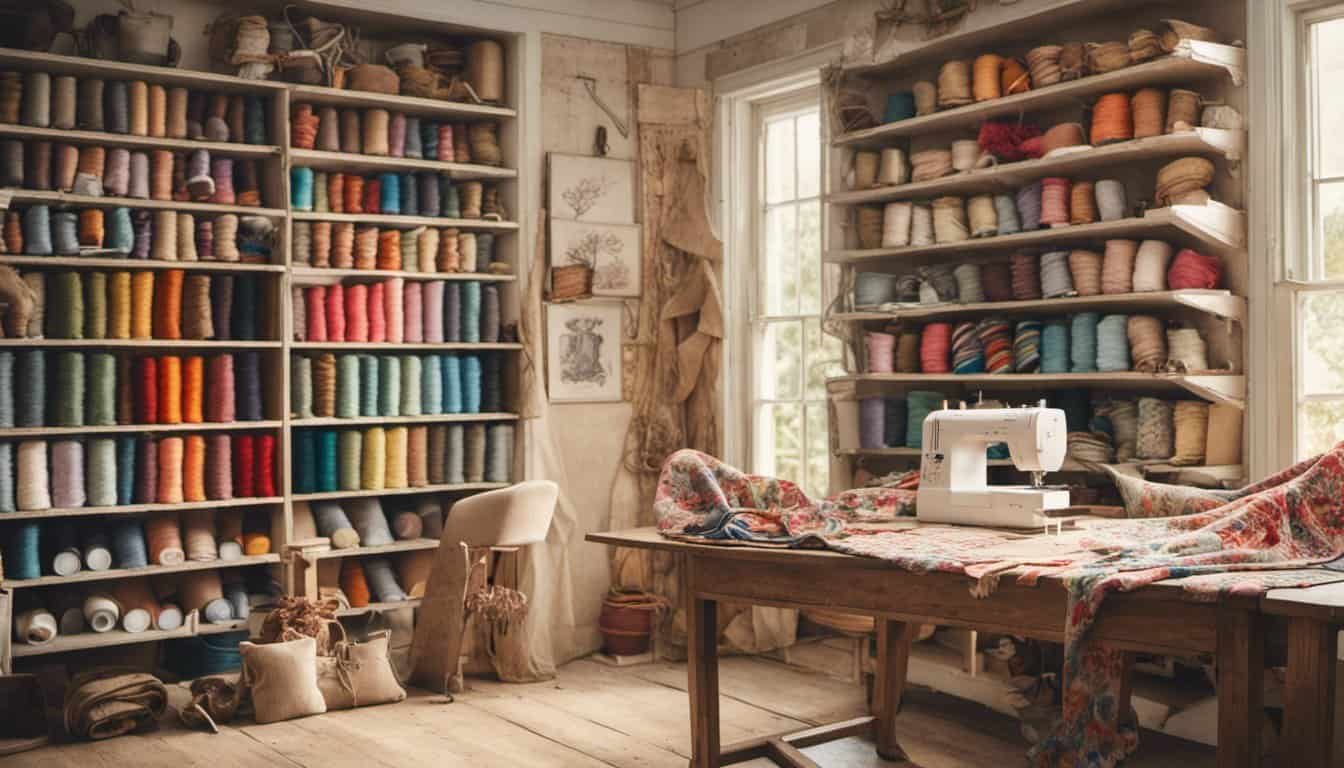Are you a quilting enthusiast looking to achieve perfect stitches on your sewing machine? One key factor to consider is the tension setting. Getting the tension right can make a world of difference in the quality of your quilting. But what tension should your sewing machine be set at when quilting? In this article, we will explore the optimal tension setting for quilting and provide you with some helpful tips to ensure smooth and even stitches. So, grab your sewing machine and let’s dive in!
When it comes to quilting, finding the ideal tension setting on your sewing machine is crucial. The right tension will ensure that both the top and bottom threads interlock seamlessly, resulting in beautifully even stitches. But how do you determine the perfect tension for quilting? In this article, we will guide you through the process of finding the sweet spot for your sewing machine’s tension dial. With a few simple adjustments, you’ll be on your way to achieving professional-looking quilts in no time.
Understanding Sewing Machine Tension
When it comes to quilting, achieving the perfect tension on your sewing machine can make all the difference in the final result of your project. Proper tension ensures that your stitches are even and balanced, resulting in a professional-looking quilt. Understanding how to adjust and maintain the tension on your sewing machine is a valuable skill that every quilter should possess.
How does sewing machine tension work?
Sewing machine tension refers to the amount of friction applied to the thread as it passes through the machine. This tension determines how tightly the top thread and bobbin thread are pulled together to create a stitch. The tension dial on your sewing machine controls this tension. By adjusting the tension settings, you can achieve the desired look and quality of your quilting stitches.
Tips for determining the perfect tension
Finding the optimal tension setting for quilting may require a bit of trial and error. Here are a few tips to help you determine the perfect tension for your sewing machine:
- Start with default settings: Begin by setting your sewing machine’s tension dial to the default setting recommended by the manufacturer. This will serve as a good starting point.
- Test your stitches: Sew a test swatch using different tension settings. Examine the stitches on both sides of the fabric. If the top thread is pulling through to the back of the fabric, the tension is too loose. On the other hand, if the bobbin thread is pulling to the top, the tension is too tight.
- Make small adjustments: Gradually adjust the tension dial, making small changes at a time. Test your stitches after each adjustment to see how it affects the tension. This will help you pinpoint the perfect setting.
- Consider the thread and fabric: Keep in mind that different threads and fabrics may require different tension settings. Thicker threads or fabrics may require looser tension, while finer threads or fabrics may require tighter tension.
The Importance of Proper Tension for Quilting
When it comes to quilting, achieving that perfect, professional-looking stitch is key. And one of the most important factors in achieving those flawless stitches is finding the right tension setting on your sewing machine. The tension setting determines how loose or tight the top and bottom threads are pulled together, ultimately affecting the appearance and strength of your stitches. So, let’s dive into why finding the optimal tension for quilting is so crucial.
Consistency is the Key
A consistent tension setting ensures that the top and bottom threads are properly balanced, resulting in even stitches throughout your quilt. When the tension is too loose, you may end up with loopy or uneven stitches. On the other hand, if the tension is too tight, the stitches may pucker or break. Finding the right tension will help you avoid these common quilting frustrations, giving your quilt that professional touch.
Enhancing the Look and Feel
Optimal tension not only affects the look of your stitches but also the overall appearance of your quilt. When the tension is correct, your stitches will seamlessly blend into the fabric, enhancing the beauty of your quilt design. Additionally, a balanced tension setting ensures that the stitches are secure, making your quilt more durable and able to withstand the test of time.
It’s All About Practice and Experimentation
Determining the perfect tension for your quilting projects may require some trial and error. Start by using the default tension settings on your sewing machine, as they are usually a good place to begin. Test stitches on a scrap piece of fabric, making small adjustments to the tension dial until you achieve the desired result. Don’t forget to consider the thread and fabric you’re using, as different materials may require slight tension modifications.
Wrap Up
Adjusting Tension for Quilting Projects
One important aspect of achieving professional-looking quilts is finding the optimal tension setting on your sewing machine. The right tension will result in even stitches and enhance the overall appearance and durability of your quilt. Fortunately, adjusting tension is not as complicated as it may seem. Here are a few tips to help you find the perfect tension for your quilting projects:
Start with default settings: When starting a new quilting project, it’s always a good idea to begin with the default tension settings on your sewing machine. This will provide you with a baseline to work from. You can refer to your machine’s manual to determine the default tension settings.
Test your stitches: Before diving into your quilting project, take some time to test different stitch settings and tensions on a scrap piece of fabric. This will allow you to see how the stitches look and make any necessary adjustments. Pay attention to the top and bottom threads – they should interlock smoothly in the middle layer of fabric.

Make small adjustments: If you notice that your stitches are too loose or too tight, you can adjust the tension accordingly. Remember, small tweaks make a big difference. Make gradual adjustments and check your stitches after each adjustment until you achieve the desired results.
Consider the thread and fabric: The type of thread and fabric you are using can also impact the tension setting. Thicker fabrics may require a slightly looser tension, while delicate fabrics might need a tighter tension. Similarly, thicker threads may need a looser tension, while thinner threads may need a tighter tension. Take these factors into consideration as you adjust the tension.
Practice and experiment: Adjusting tension is a skill that develops with practice. Don’t be afraid to experiment with different settings and techniques. The more you practice, the more comfortable you’ll become with adjusting tension for different quilting projects.
Remember, finding the optimal tension setting for your sewing machine is crucial for achieving professional-looking quilts. Take the time to test and adjust the tension, considering the thread and fabric you’re using, and don’t forget to practice! With a little patience and experimentation, you’ll be well on your way to creating beautiful quilts that will last for years to come.
Tips for Finding the Right Tension Setting
When it comes to quilting, finding the perfect tension setting on your sewing machine can make all the difference. It ensures that your stitches are even, resulting in a quilt that not only looks professional but also lasts for years to come. To help you achieve the optimal tension, here are some valuable tips:
« Discover the Ultimate Sewing Secrets: Uncover the Best Places to Get Your Sewing Done
Discover the Surprising Rise in Sewing: How This Timeless Craft is Taking the World by Storm »
1. Start with Default Settings: Most sewing machines come with default tension settings. Begin by setting the tension dial to the recommended standard setting. This will serve as a good starting point for your quilting journey.
2. Test Stitches: Take a scrap piece of fabric and run a few test stitches. Examine the resulting stitches closely. If the top thread is pulling through to the back, the tension is too loose. On the other hand, if the bobbin thread is showing on the top, the tension is too tight. Adjust the tension dial accordingly, in small increments, until you achieve balanced stitches on both sides of the fabric.
3. Make Small Adjustments: When adjusting the tension, do it in small increments. A quarter of a turn can make a significant difference. This way, you can fine-tune the tension without overdoing it.
4. Consider Thread and Fabric: Remember that different threads and fabrics might require different tension settings. Experiment with different thread types and fabric weights to find the best tension for each combination.
5. Practice Makes Perfect: Practice is key to finding the perfect tension setting. The more you quilt, the better you’ll understand your machine and its tension requirements. Don’t be afraid to experiment and make adjustments along the way. With practice, you’ll soon be achieving beautifully even stitches.

Troubleshooting Common Tension Issues
Finding the optimal tension setting on your sewing machine is crucial for achieving beautiful and durable quilting stitches. However, even with the right initial settings and careful adjustments, you may encounter some common tension issues that can affect the quality of your quilting. Here are some troubleshooting tips to help you overcome these challenges:
1. Uneven Stitches
If you notice that your stitches are uneven, it could be a sign of incorrect tension. To address this issue, try the following:
- Check the top thread tension: If the top thread is too loose, tighten the tension by turning the dial or adjusting the tension setting. If it’s too tight, loosen the tension. Remember to make small adjustments at a time to avoid overcompensating.
- Inspect the bobbin tension: Uneven stitches can also occur if the bobbin tension is incorrect. Check the bobbin case for any loose threads or debris that may be affecting the tension. If necessary, adjust the bobbin tension screw according to the manufacturer’s instructions.
2. Puckering or Gathering
Excessive puckering or gathering of the fabric indicates that the tension is too tight. To fix this issue:
- Loosen the top thread tension: Gradually decrease the tension by turning the dial or adjusting the tension setting until the fabric lays flat and smooth.
- Ensure proper thread and needle selection: Using the correct thread and needle for your fabric can also prevent puckering. Choose a thread that matches the weight of the fabric and select a needle size appropriate for the project.
3. Thread Breakage
If you’re experiencing frequent thread breakage, it may be due to incorrect tension. Follow these steps to address the issue:
- Check the top thread and bobbin: Ensure that both the top thread and bobbin are threaded correctly. Re-thread the machine if necessary, making sure to follow the correct path for each.
- Adjust the tension: If the thread continues to break, the tension may be too tight. Gradually reduce the top thread tension until the thread runs smoothly without breaking.
Remember, troubleshooting tension issues requires patience and experimentation. Take the time to test and adjust your tension settings while considering the thread and fabric you’re using. Practicing your quilting skills will help you become more familiar with how different threads and fabrics interact, allowing you to achieve consistent and professional-looking stitches without a conclusion paragraph

Conclusion
Finding the optimal tension setting on your sewing machine for quilting is crucial for achieving professional-looking and durable quilts. By following the tips provided in this article, you can ensure that your stitches are even and your quilts are of the highest quality.
Start by using the default tension settings on your sewing machine and then test your stitches on a scrap piece of fabric. Make small adjustments to the tension until you achieve the desired results. Remember to consider the type of thread and fabric you are using, as they can affect the tension needed.
If you encounter common tension issues such as uneven stitches, puckering or gathering, or thread breakage, consult the troubleshooting section for solutions. Taking the time to test and adjust the tension, considering the thread and fabric, will greatly improve your quilting results.
So, don’t be afraid to experiment and practice with different tension settings. With a little patience and attention to detail, you’ll be able to create beautiful quilts that will be cherished for years to come. Happy quilting!


















